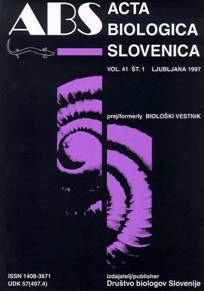 The synergy of xenobiotics in honey bee
Apis mellifera: mechanisms and effects
Gordana GLAVAN, Janko BOŽIČ
Abstract
During foraging activities honeybees are frequently exposed to different
xenobiotics, most of them are agrochemical pesticides and beehive chemicals. Many
pesticides are applied together and synergism is likely to occur in different organisms.
The risk of synergisms is neglected and relatively few studies were performed
concerning the effects and synergy mechanism of different xenobiotic combinations
in honeybees. The understanding of synergy mechanisms between xenobiotics is
very important for the control of defined mixtures use and also for the prediction of
potential toxicity of newly developed substances in agriculture and apiculture. This
review is focused on the effects, mechanisms and molecular targets of xenobiotics in
honeybees and possible complex mechanisms of their synergisms. The main threat
for honeybees are insecticides which primary molecular targets are few neuronal
molecules therefore causing the impairment of neuronal system that have a profound
effect on honeybee behavior, cognitive functions and physiology. However, the majority
of synergistic effects observed in honeybees were ascribed to the inhibition of
detoxifying midgut enzymes P450 involved in xenobiotic metabolism since most of
studies were done with the mixtures xenobiotic/P450 inhibitor. The main inhibitors
of P450 enzymes are specific compounds used to prolong the effects of pesticides as
well as some fungicides. Some insecticides can also interact with these enzymes and
influence the xenobiotis. Although the primary mechanisms of action of individual
xenobiotics especially insecticides are well known and there are possible interactions
in honeybees at their primary target sites, this issue is underestimated and it warrants
further investigation.
Keywords
synergism, xenobiotic, A
pis mellifera
, mechanism, pesticide, P450 |




